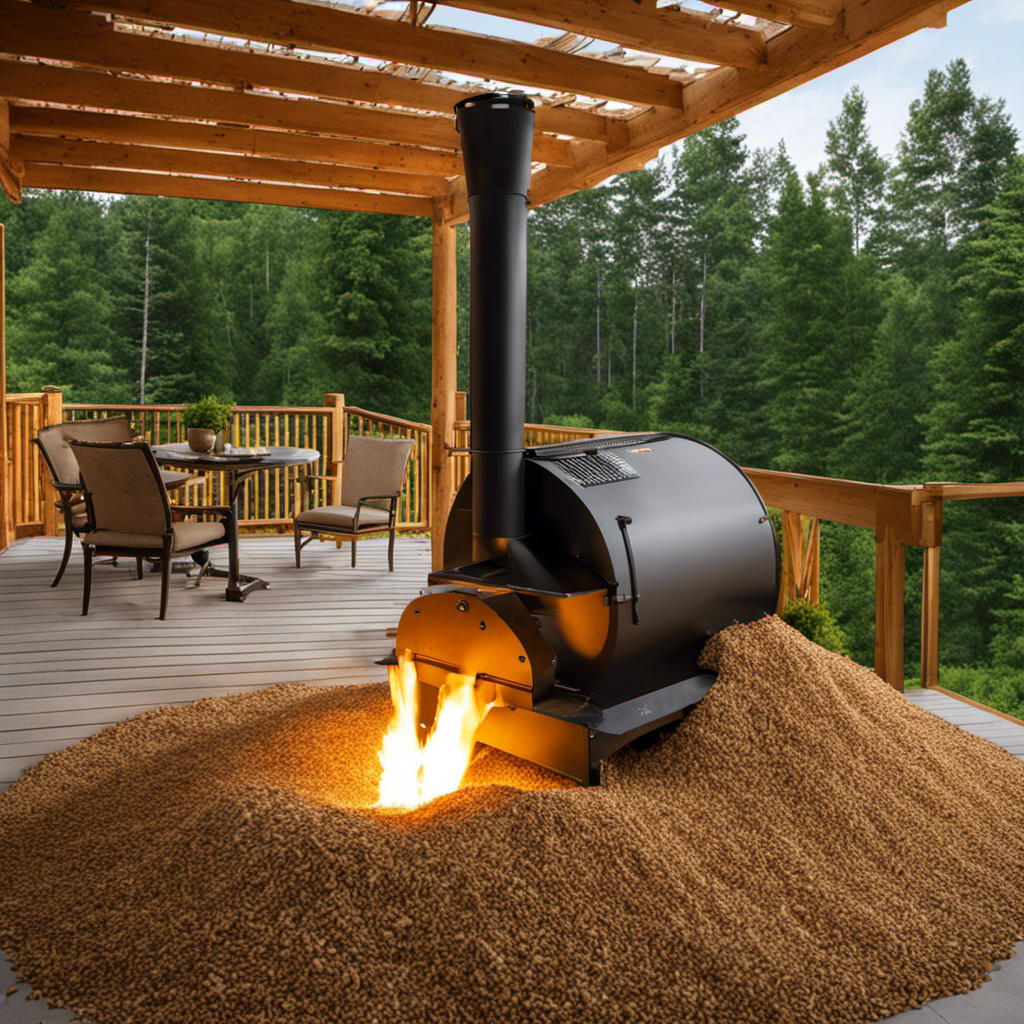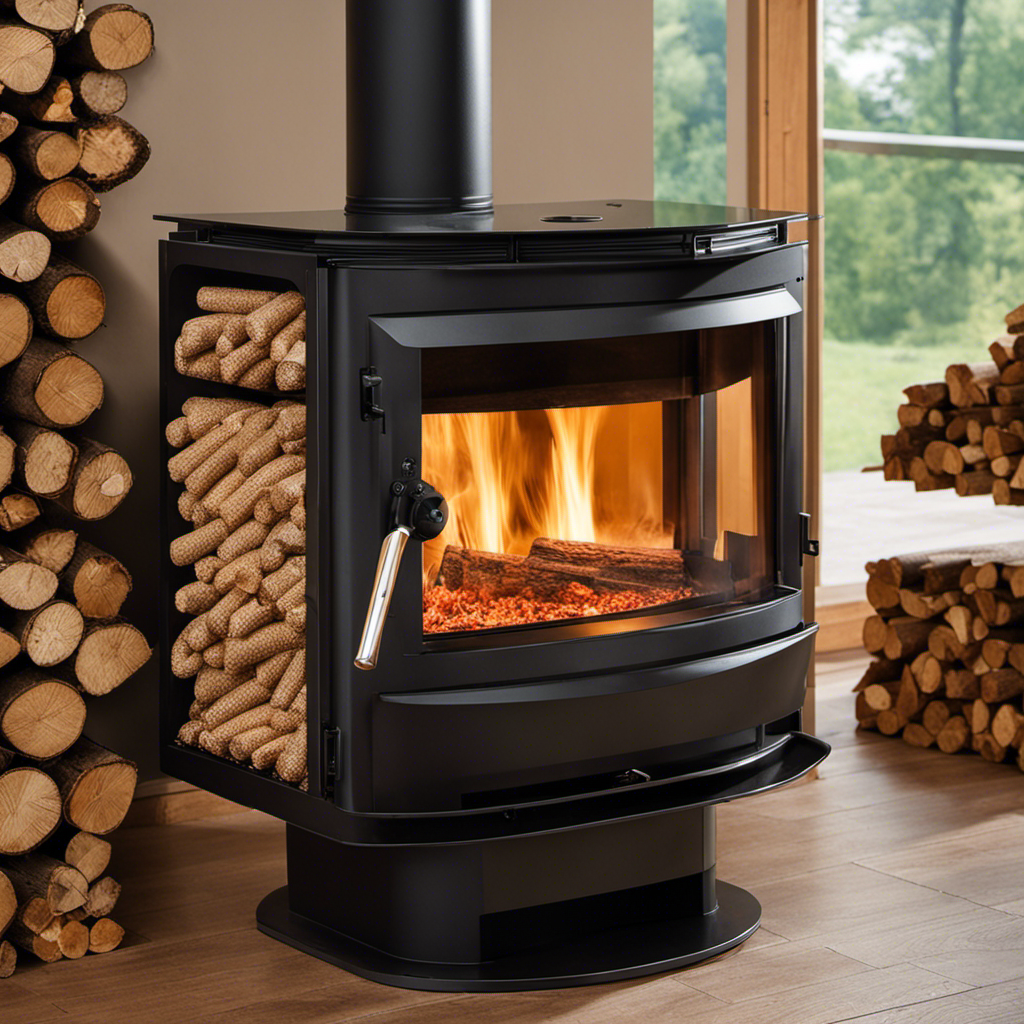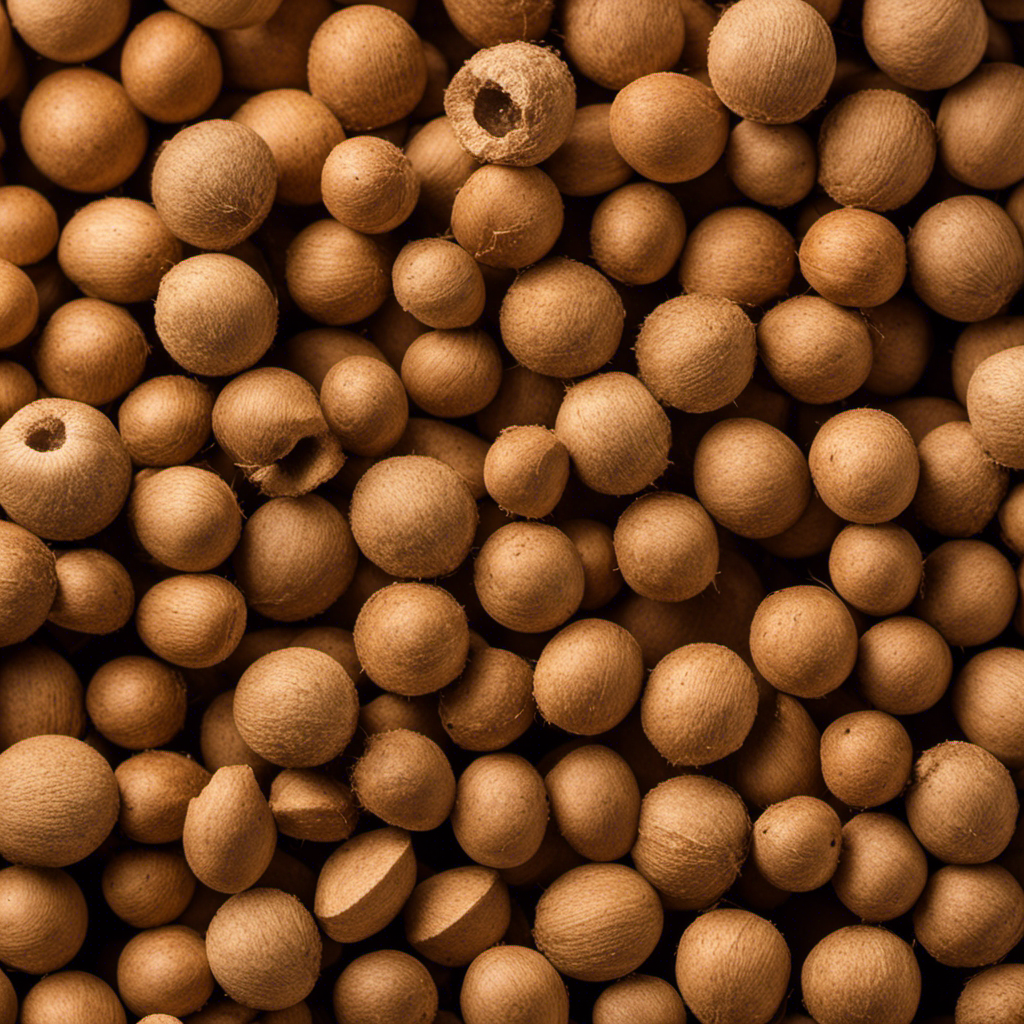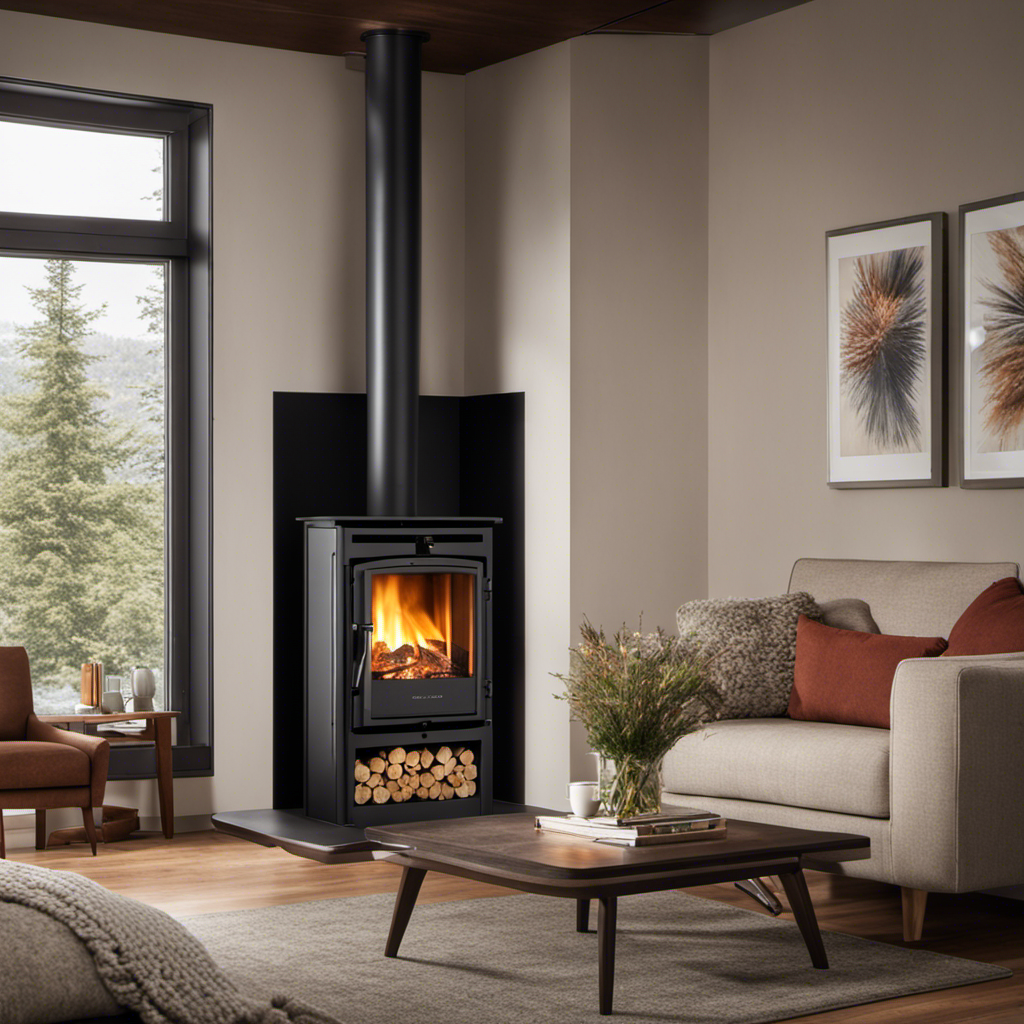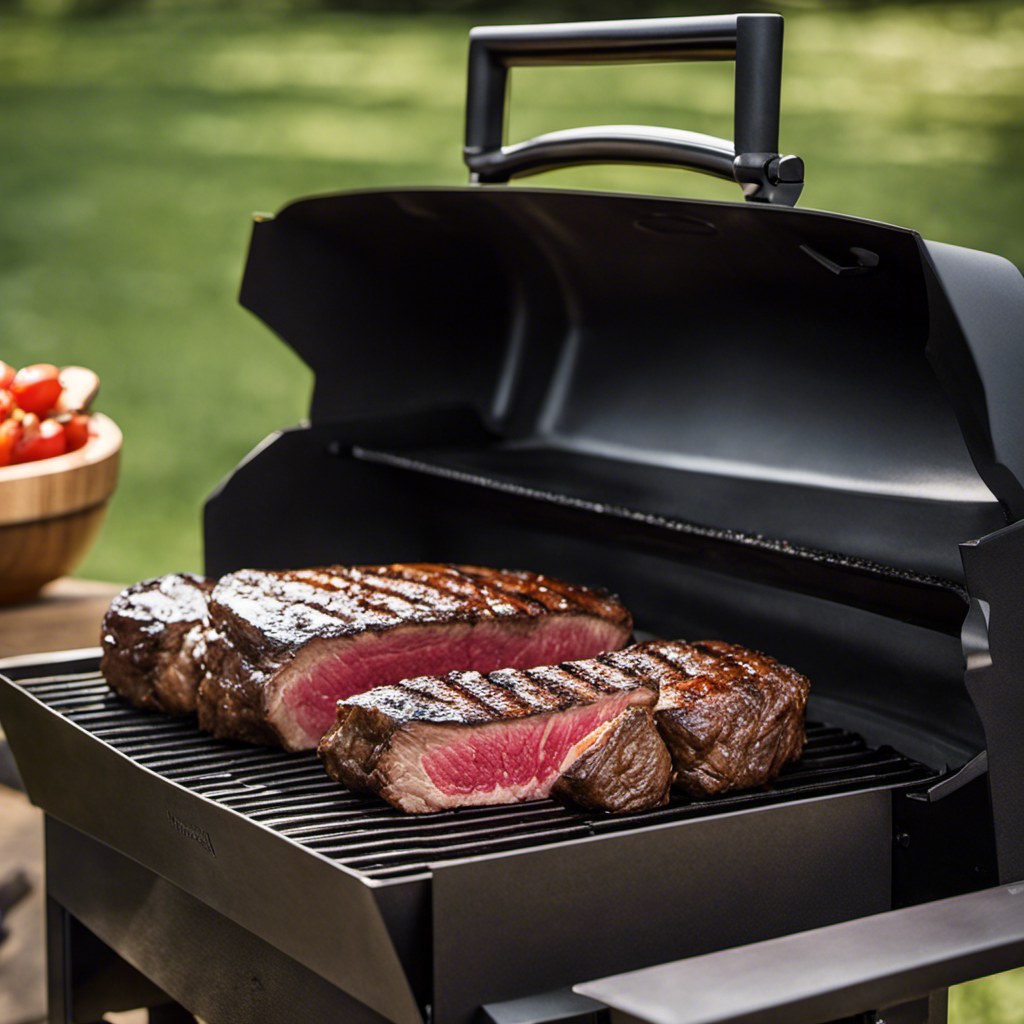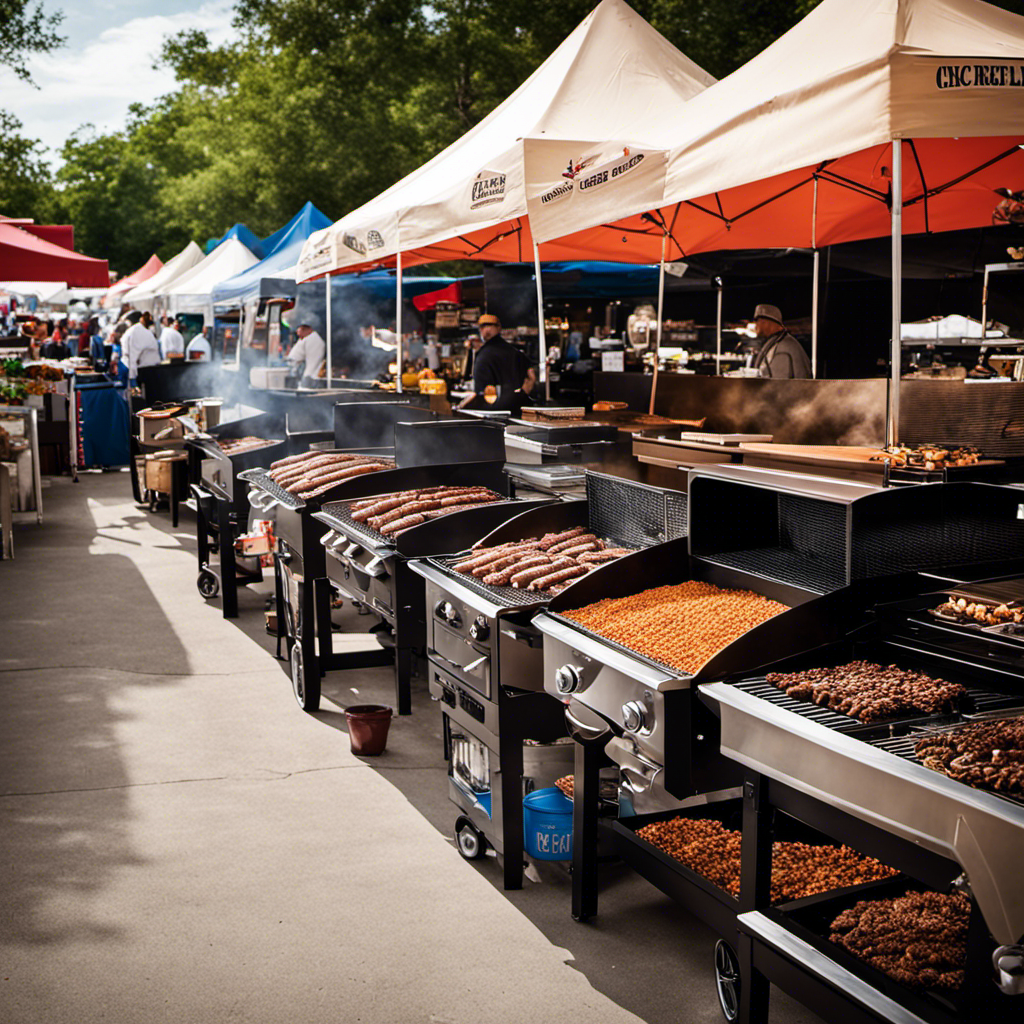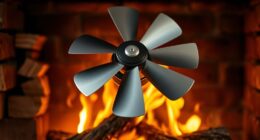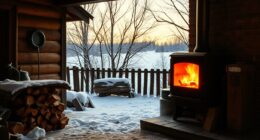I’ve always valued the comfortable warmth provided by a pellet stove in my home. However, the high cost of purchasing wood pellets has led me to search for a more economical substitute on my own.
In this article, I’ll show you how to make wood pellets for your pellet stove. With just a few simple steps, some equipment, and the right materials, you’ll be able to create your own high-quality wood pellets that are both cost-effective and eco-friendly.
Let’s get started!
Key Takeaways
- Regular maintenance of pellet mill, hammer mill, and pelletizer is necessary for optimal performance and longevity.
- Wood moisture levels should be around 10-15% for efficient combustion and to prevent excessive ash and smoke.
- Proper grinding and drying techniques are essential for preparing wood for pellet production.
- Raw material selection, binders, and moisture content control are crucial for creating high-quality pellets.
Equipment and Materials Needed
You’ll need a pellet mill, a hammer mill, and a pelletizer to make wood pellets for a pellet stove. These equipment are essential for the process and require regular maintenance to ensure optimal performance.
Proper equipment maintenance is crucial to prevent breakdowns and extend the lifespan of your machinery. Regular cleaning, lubrication, and inspection of the pellet mill, hammer mill, and pelletizer will help identify any issues and avoid costly repairs.
Additionally, it is important to conduct a cost analysis before purchasing the equipment. Consider factors such as initial investment, maintenance costs, and energy consumption to determine the long-term viability of producing wood pellets.
Once you have the necessary equipment, the next step is to select and prepare the right type of wood for pellet production.
Wood Selection and Preparation
To ensure optimal performance, it’s important to carefully select and prepare the type of timber you plan to use for your pellet stove. When it comes to wood selection, there are two key factors to consider: wood moisture levels and wood species selection.
Here are three important points to keep in mind:
-
Wood moisture levels: It is crucial to use wood with the right moisture content for pellet production. Ideally, the moisture content should be around 10-15%. This ensures efficient combustion and prevents excessive ash and smoke.
-
Wood species selection: Different wood species have varying heat output and burn characteristics. Hardwoods like oak and maple are known for their high energy content and longer burn times, making them ideal choices. Softwoods like pine and spruce, on the other hand, burn hotter but faster.
Grinding and Drying the Wood
Once the wood has been selected and prepared, it’s time to start grinding and drying it for pellet production. Grinding techniques play a crucial role in achieving the desired wood particle size for pellet making. The wood is commonly processed through a hammer mill or a wood chipper to reduce its size. The grinding process breaks down the wood into smaller, uniform pieces, ensuring efficient pellet formation.
After grinding, the wood needs to be properly dried to remove excess moisture. Drying methods commonly used include natural drying and mechanical drying. Natural drying involves exposing the wood to air and sunlight, allowing it to naturally reduce its moisture content. Mechanical drying, on the other hand, uses specialized equipment like rotary dryers or flash dryers to quickly remove moisture from the wood.
Once the wood is finely ground and adequately dried, it can be used to create the pellet mixture, which will be the next step in the pellet production process.
Creating the Pellet Mixture
When the wood is finely ground and properly dried, it’s ready to be used in creating the pellet mixture. In this step, there are several important factors to consider to ensure the quality of the pellets.
-
Raw Material Selection: Careful selection of wood species is crucial to achieve optimum pellet density and combustion efficiency. Different wood types have varying properties that affect pellet performance.
-
Binder Addition: Binders are added to the wood fibers to enhance pellet durability and prevent disintegration during handling and combustion. Popular binders include vegetable oils, lignin, and starch.
-
Moisture Content Control: Maintaining the correct moisture content is essential for consistent pellet quality. Excessive moisture can lead to pellet expansion and decreased density, while low moisture content can result in pellet brittleness and increased dust.
Pellet Pressing and Forming
To achieve the desired compactness and shape, you’ll need to apply pressure to the pellet mixture using a pellet press.
Pellet pressing techniques are crucial for ensuring the formation of high-quality wood pellets. The pellet press works by compressing the mixture, which helps bind the wood particles together.
However, it is important to troubleshoot any issues that may arise during the pellet formation process. Sometimes, the pellets may not hold their shape or may break easily. This could be due to factors such as inadequate moisture content, incorrect temperature, or improper binding agents. Adjusting these variables can help improve pellet formation.
Once the pellets are properly formed, the next step involves storing and using the wood pellets efficiently, ensuring maximum heat output and minimal waste.
Storing and Using the Wood Pellets
Storing and using the wood pellets efficiently ensures maximum heat output and minimal waste. To achieve this, it is important to follow proper storing methods and understand how they can impact pellet stove efficiency.
Here are three key considerations:
-
Dry storage: Wood pellets should be kept in a dry environment to prevent moisture absorption. Moisture can degrade the pellets and affect their combustion efficiency.
-
Airtight containers: Storing pellets in airtight containers helps maintain their quality by preventing exposure to air and moisture. This ensures consistent heat output and minimizes the risk of pellet deterioration.
-
Regular cleaning: Keeping the pellet stove clean is crucial for optimal performance. Regularly removing ash and debris not only improves efficiency but also extends the lifespan of the stove.
Frequently Asked Questions
How Much Ash Does Burning Wood Pellets Produce Compared to Traditional Firewood?
Burning wood pellets produces less ash compared to traditional firewood. This is one of the benefits of using wood pellets over traditional firewood. The lower ash content makes cleaning and maintenance easier.
Can Wood Pellets Be Made Using Different Types of Wood?
Different types of wood can be used to make wood pellets, offering various advantages. Each type has specific characteristics that affect burn efficiency and heat output. Understanding these differences helps optimize pellet production.
What Is the Typical Lifespan of a Pellet Stove?
The typical lifespan of a pellet stove can vary depending on usage and maintenance. Regular cleaning of the stove and chimney, along with proper fuel quality, can extend the lifespan of a pellet stove.
Are There Any Safety Precautions to Consider When Using Wood Pellets in a Pellet Stove?
When using wood pellets in a pellet stove, it’s crucial to follow safety precautions. Avoid common mistakes like overloading the stove or using wet pellets. Stay vigilant and ensure proper ventilation to prevent accidents.
Can Wood Pellets Be Used in Other Types of Heating Systems Besides Pellet Stoves?
Yes, wood pellets can be used in other heating systems like biomass boilers. They are cost-efficient and have a low environmental impact. However, it’s important to consider the specific requirements and compatibility of the heating system.
Can I Use Homemade Wood Pellets for My Pellet Stove?
Yes, you can use homemade wood pellets for pellet stove. Making your own wood pellets can be a cost-effective and eco-friendly alternative to store-bought options. However, it’s important to ensure the pellets are of high quality and meet the stove’s specifications for optimal performance.
Conclusion
In conclusion, making wood pellets for a pellet stove is an incredibly simple and straightforward process. With just a few pieces of equipment and some basic materials, you can transform any type of wood into high-quality pellets.
The grinding and drying steps ensure optimal moisture content, resulting in efficient burning. By using a pellet press, you can easily form pellets of the desired size and density.
Storing and using the wood pellets is a breeze, making it a convenient and cost-effective fuel option for your pellet stove. Get ready to enjoy cozy warmth like never before!
Growing up surrounded by the vast beauty of nature, Sierra was always drawn to the call of the wild. While others sought the comfort of the familiar, she ventured out, embracing the unpredictable and finding stories in the heartbeat of nature.
At the epicenter of every remarkable venture lies a dynamic team—a fusion of diverse talents, visions, and passions. The essence of Best Small Wood Stoves is crafted and refined by such a trio: Sierra, Logan, and Terra. Their collective expertise has transformed the platform into a leading authority on small wood stoves, radiating warmth and knowledge in equal measure.

